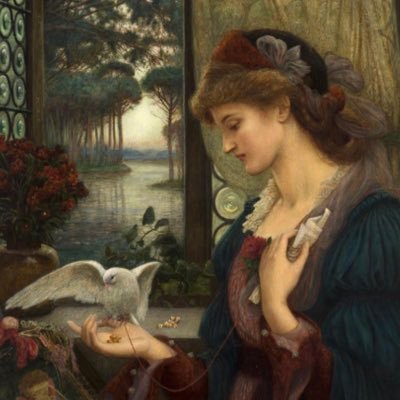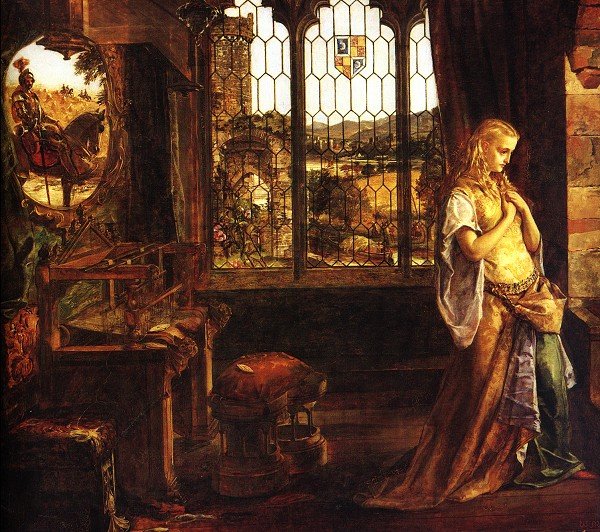Karibou Kisses & Elfin En'deer'ment: one of Edmund Dulac's enchanting illustrations for Hans Christian Andersen's 'The Snow Queen' (1911) for this week's #MagicMonday.
More Ladies of Shalott for this week's #ThursdayTheme. Elizabeth Siddal (1853) & William Maw Egley (1858) depict:
'She left the web, she left the loom
She made three paces thro' the room
She saw the water-flower bloom,
She saw the helmet and the plume
She look'd down to Camelot'
Missed one of the PRS lectures? Recordings are available for all of our talks since November 2020. Topics include Swinburne, Siddal, Ruskin, Bunce, Eaton, Rossetti, Prynne, Paton & Pre-Raphaelite stained glass, myth, modernism & collectors! https://t.co/FAtYC4D8Pp
Strike a pose.... A rather staged and lounging Ophelia by Victor Müller (c.1869 Städel Museum, Frankfurt am Main) for this week's #TearsOnTuesday. "Melancholy, elegiac, blasé, unhappy, in short: quite curious,” is apparently how Müller described his work...
In December we embrace #SnowSaturdays with Marie Spartali Stillman’s ‘The Enchanted Garden’. Inspired by Boccaccio’s Decameron, despite the distant, snowy scenes, within the walls of Ansaldo’s garden a summer garden is conjured to woo his beloved Dianora.
Post by @HannahRSquire
An apple a day (or 4!) 'A Merciless Beauty' by Frank Cadogan Cowper (1906) for this week's #FridayFavourite accompanied by lines from Chaucer's Rondel of same name: 'Your yen two wol slee me sodenly; I may the beautee of hem not sustene,
So woundeth hit throughout my herte kene'
'I paint myself constantly, that is to say whenever I want to make an experiment in method or colour, & I am not in the humour to make a design': self-portaits for this week's #WattsOnWednesday: (1834, 1853, c.1860, 1879 @WattsGallery & NPG) https://t.co/FcMLYFRpZV
This week's #TearsOnTuesday it's the tragic heroine from a female perspective by Maria Spilsbury (c.1800), Marie Berthe Mouchel (1915) & Henrietta Rae (detail, 1890) plus a poster for the 2018 Ophelia film now playing on Netflix, a telling of “Hamlet” from Ophelia’s point of view
Can there be as many Belle Dames as Ophelias in Victorian art? Perhaps not. But there are still a few to go! Today's offerings are by Herbert Cole (1906), Arthur Hughes (study, c.1863), Rossetti (1848) plus another version by Henry Meynell Rheam (c.1900).
Lily-Pad or Billowing Angel? This week's Ophelia is by W.G Simmonds (1910, an illustration from an edition of Shakespeare's Hamlet owned by the Huntington Library) for #TearsOnTuesday.
























